Science & Nature
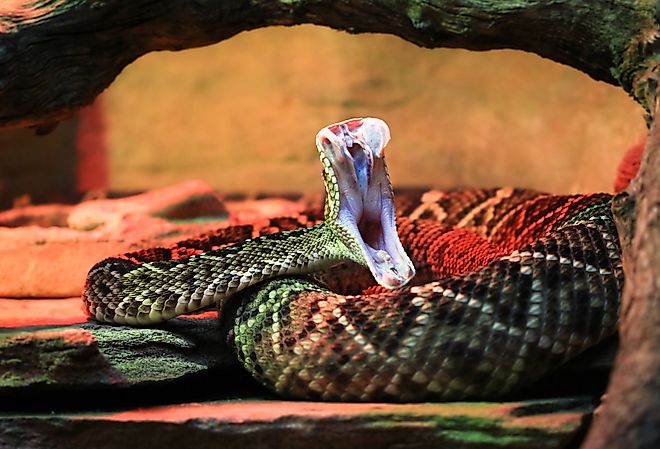
13 Of The Deadliest Animals in Florida
This article sheds light on some of the deadliest animals in Florida that visitors and lifelong Floridians would be wise to give a wide berth!
7 Iconic Animals That Live Only In The UK
A focused look at seven animals found only in the UK, from island insects to Highland birds, shaped by isolation, habitat, and conservation.

How Burmese Pythons Took Over the Florida Everglades
The Everglades in Florida have an enormous population of invasive Burmese pythons, which are tremendously harmful for local and native species.
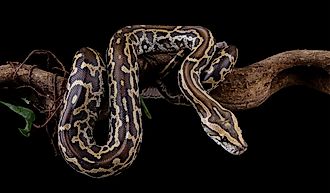
Why the Blue Whale Might Not Be the Largest Animal in History
This article summarizes evidence provided by recent discoveries regarding the debate as to whether the blue whale is in fact the largest animal.

The Most Snake Infested Lakes in Louisiana
Louisiana has an abundance of snakes including rattlesnakes, pit vipers, and water snakes. Explore some of the state's most snake infested lakes.

The 10 Busiest Train Stations in the World
Busiest train stations, mostly in Japan, serve as dense transit-commercial hubs; Shinjuku leads, while India’s Howrah and Sealdah rank high.
6 Strange Discoveries About the Bermuda Triangle
Unravel the myths and science behind strange events, disappearances, and natural forces long linked to the mysterious Bermuda Triangle.

10 Iconic Animals That Live Only In Asia
The following ten iconic animals that only live in Asia are symbols of the continent's rich ecology and among the most recognizable living creatures on Earth.
The Foggiest Cities In The US
Eerily beautiful and geographically unique, US cities such as New Orleans, Raleigh, and Jacksonville experience the most fog days per year.
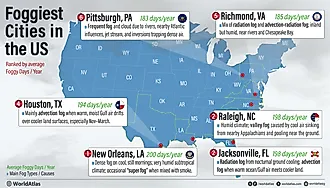

The 6 Deadliest Animals On The Gulf Coast
From sharks to spiny fish, meet the Gulf Coast’s most dangerous animals and get key safety tips to stay aware and enjoy this biodiverse shoreline.

The 13 Most Snake Infested Areas In Wisconsin
There are about 21 snake species in Wisconsin, 14 of which are considered endangered and facing diverse threats of grave concern.

The 6 Deadliest Animals In Southern California
The deadliest animals in Southern California include mountain lions, great white sharks, scorpions, snakes, and spiders.
10 Strange Discoveries About the Deep Ocean
A look at ten unusual deep-ocean findings, from glowing predators to underwater waterfalls, showing how much of the deep sea remains unknown.
The Fastest Winds In The Solar System
Neptune is home the fastest recorded wind speeds in the solar system. The extreme winds are driven by Neptune’s internal temperatures.
The Most Snake Infested Lakes in Oklahoma
These bodies of water in Oklahoma contain the largest populations of snakes - mostly harmless but good to be on the lookout for nonetheless!
The 10 Driest US States
Explore the ten driest US states by average annual precipitation, the geography that makes them dry, and surprising wet places within them.
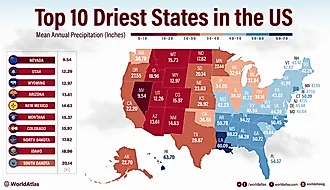
Which State Has More Venomous Snakes: Arizona or Georgia?
Arizona and Georgia both have 40+ kinds of snakes and, in particular, a number of venomous snakes. Ultimately, Arizona has more venomous snakes than Georgia.
8 Strange Discoveries About Mount Everest
Everest, once seen as pure and remote, now reveals strange things like frozen bodies, ghost tales, plastic dust and tiny spiders amid ice.
14 Venomous Snakes of New South Wales
This article explores 14 venomous snakes in New South Wales, detailing their distribution, appearance, behavior, and ecological roles.
Are Burmese Pythons Going To Invade More States Beyond Florida?
Learn about Burmese pythons’ invasion of the Florida Everglades, their ecological impact, and the barriers to their spread beyond Florida.

Animal Species That Cannot Be Domesticated
Humans have managed to domesticate many animals, and it became a huge part of our everyday lives. Many believe that humans began domesticating animals 13,000 years ago

Earth’s Core Holds Enough Gold to Cover the Planet In A Knee-High Layer
Scientists explain why most of Earth’s gold lies deep in the core, how early planetary processes trapped it, and why only a small amount remains near the surface.

What are the Differences Between Plant Cells and Animal Cells?
Some of the main differences between plant and animal cells include the lack of cell walls, the position of the nucleus, and the number of vacuoles.

The Most Snake Infested Lakes in Iowa
Approximately 28 snake species occur within Iowa's borders, with five being venomous. These are the most snake-infested lakes in the state.

The Most Snake Infested Lakes in Nebraska
These locations in Nebraska are home to the largest snake populations, including Lake McConaughy, Branched Oak Lake, and more.

The 10 Wettest States In The US
The wettest U.S. states include Hawaii, Louisiana, Mississippi, and others, influenced by warm oceans, terrain, and humid climates.

Animals That Live in the Tundra
Polar bears, yaks, mountain goats, snowy owls, and arctic foxes are just a few of the unique animals found living in the tundra biome.

What Are The Layers Of The Sun?
Just like our planet, and most other celestial bodies, the Sun is divided into distinct layers. The critical difference is that the Sun is not solid, unlike Earth.
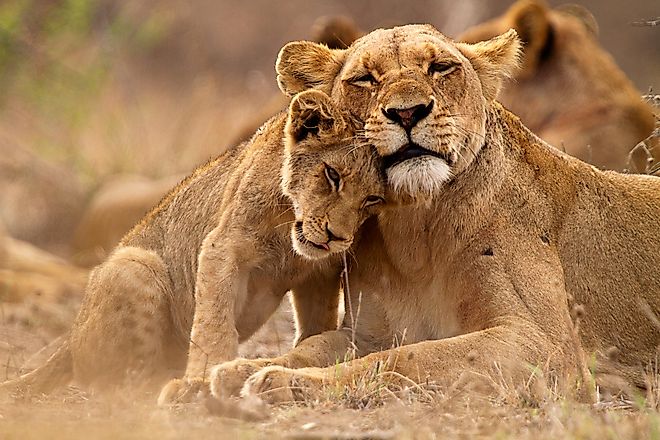
Animal Societies That Are Matriarchal
Matriarchy is defined as a social system in which females hold the primary positions of power. In the animal kingdom, several species can be considered a matriarchy.
What Is A Species?
Species is the fundamental unit of biological classification. The term 'species' was first coined by the English Naturalist John Ray.
Will The Country Of Tuvalu Disappear Beneath the Sea?
Tuvalu faces rising seas, vanishing freshwater, and cultural upheaval as climate change threatens to erase this Pacific island nation.
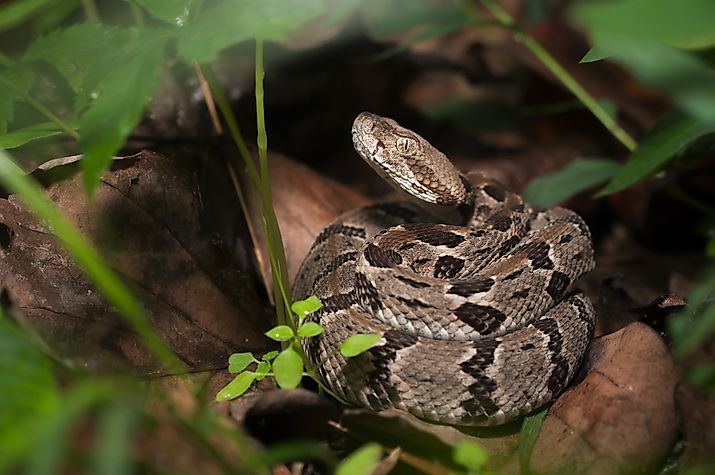
Snakes To Avoid In Minnesota
Only two of the 17 snakes found in Minnesota are venomous, and based on their conservation status, it is unlikely visitors will encounter either one.
The Northern Lights (Aurora Borealis) Explained
Although the aurora are generally green, they can come in a multitude of different colors. The color is determined by the atoms that are being ionized.
The Venomous Snakes Of New York
When in New York's wooded or wetland areas, watch out for these three venomous snake species, though you are unlikely to get bitten.

Western Ghats Biodiversity Hotspot
As one of the world’s “hottest biodiversity hotspots” and a UNESCO World Heritage Site, the Western Ghats is on the conservation watch-list.

10 Countries With Some Of The Biggest Temperature Swings
These 10 countries experience extreme temperature swings due to geographical features, with hot summers and long, frigid winters.
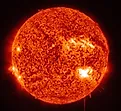
The Largest Solar Flare Ever Recorded
The largest solar flare ever recorded occurred in 1859 and was called the Carrington Event. As an X45-class flare, it caused widespread disruption on Earth.

10 Amazing Sharks You Never Knew Existed
There are more than 1,000 different species of sharks in the Earth's oceans and seas, from the tiny dwarf lantern shark, to the giant whale shark.

How Many Types Of Elephants Are There?
An overview of the main elephant species and subspecies, and how they differ in habitat and physical characteristics.
